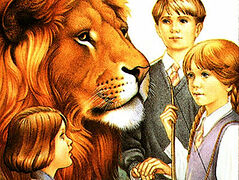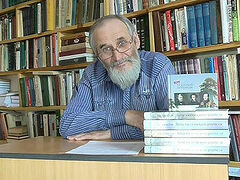Among the many stories about animals who can talk like humans, one stands out. It has neither enchanting transformations nor rhetorically pretentious miracles. Even the adventures aren’t the story’s compelling force; they rather serve as an accompaniment to the main idea. On the other hand, this story abounds in scenes of nature, slow walks and picnics, and conversations that flow like a river. Then, there is the river itself, the story’s focal point, its background, the main set and the silent character.
Small forest animals are also talking characters in this fantasy short story. They fish and compose verses, clean up their burrows in spring and enjoy their time by the fireplace in winter, contemplate life and lay in a store for winter. Besides, they share a truly touching friendship. They also always hold their own—to their land, their river, and their life.
You may ask: how can a book like this be written for children? Couldn’t it be more of a philosophical fairy-tale, a delicate allegory, or a parable? Nothing of the kind—it is a fairy-tale for children. It was based on stories a father told his energetic and mischievous son who was in poor health.
The father’s name was Kenneth Grahame. He was a bank clerk who dreamed of literary fame. He was raised by his grandmother, because his mother had died and his father became an alcoholic. When Grahame grew up, he got married but it wasn’t a happy marriage; this union lacked chemistry and was filled with a fair amount of reproach, jealousy, and resentment. The only joy Grahame had was his son.
 Kenneth Grahame, writer Alastair Grahame was born physically weak, blind in one eye and possessing certain psychiatric deviances. He for some reason liked to throw himself under passing state carriages. That’s what killed him later: Alastair died under the wheels at the age of twenty.
Kenneth Grahame, writer Alastair Grahame was born physically weak, blind in one eye and possessing certain psychiatric deviances. He for some reason liked to throw himself under passing state carriages. That’s what killed him later: Alastair died under the wheels at the age of twenty.
The never-ending antics of their son were tiring and unsettling for his parents. But their love was stronger. And so, with boundless affection and tactfulness, Kenneth Grahame composed these fairy-tales for his little Alastair. In them, the talking little creatures lived on the banks of a wide river (the author surely used the Thames as prototype; the writer himself grew up on it). Mole, Rat, along with Badger and Water Rat, became the heroes of the stories about a slow-paced life. And then there was Mr. Toad, the good-natured, shy, and vain owner of Toad Hall, a fan of expensive cars and flattery, parties and fashionable ties. Mr. Toad, who looked so much like Alastair himself.
The boy was unable to build friendships at school—no one liked him. But in his father’s stories, Toad had friends, and even though they grumbled and grew indignant, they were always there at his most desperate moments, helping him out of trouble, rescuing, berating, or bringing him to reason. They would also do it over and over again. As true friends do, for better or for worse.
Time passed, Alastair grew up, and the tales formed a short novel. It was published and became wildly popular in England, the United States, and later in other countries. Alan Milne himself considered Kenneth Grahame as his teacher. Milne’s talking animals didn’t make such a solid housekeeping, but their sunny forest was clearly of the same making as the one in the tale about Mole and Rat.
The song of the wind in the willow branches is the voice of the Creator Who protects the residents of the riverbanks and the forest
Graham’s book is called “The Wind in the Willows.” At first glance, this poetic title seems quite at odds with the story: the shenanigans of Toad, the touching friendship between Mole and Rat, the celebrations and the everyday life. But it reveals the deep and true meaning of the story. The song of the wind in the willow branches is the voice of the Creator Who protects and preserves the tiny inhabitants of the riverbanks and the forest.
The River
The river is a full-fledged hero of the book. It shapes the lives of the characters. That’s where the narrative begins: Mole carelessly quits his spring-cleaning and walks outside on the shore.
“He was walking along the shore, like a toddler who walks beside an adult, eagerly catching every word of his wondrous stories.”
It was the river that gave Mole his best friend and his most important creature—Rat.
Rat (or, put simply, a water rat) is a true child of the river. It feeds and protects him and tells him stories.
“The river is my whole world, and I need no other world. Everything is here, by the river, and, if anything this world lacks, it means it is not needed,” says Rat.
This phrase isn’t backward, it is more like unconditional love: I don’t need another mother, because mine is the best, the most beautiful and the most intelligent. As a river devotee, Rat is happy in his allegiance.
Mole, who has settled in the Rat’s den, is more of an admiring observer. He does not really understand the river, but he loves it because he loves his friend Rat. Mole conscientiously tries to understand the river, and he succeeds in this. This resembles the fates of two people: one of them was born and raised in his native land and loves it, whereas the other ended up there by circumstance—but also fell in love, sincerely and faithfully. Either love is good.
The main theme associated with the river is about homeland, a place where you feel good, useful and happy
But the main theme having to do with the river is about homeland, a place where you feel good, useful and happy. One day, Rat fancied he became a traveler (the chapter “The Open Road” speaks about this). He meets a traveler, the Sea Rat, and anxiously asks him about the foreign lands. Then he hears something he never expected to hear:
“I had everything and even more, but here I am—and thank God, my friend, thank God—far from home, but even further away from my dream.”
The sea rat tells the river rat about far-away wonders, adventures, and amazing cities. The latter is about to embark on a journey, but Mole stops him. Gradually, his thirst for wandering subsides. The Rat sobers down knowing that he will only feel good where he is needed—on home ground.
“The spell was about to be broken, the radiance grew dim, and he was no longer sure that what he had heard a few hours ago was the only thing worth living for.”
Rat stays true to his river. And he is happy doing so.
A friend
Mole is Rat’s closest friend. He is always there, be it in trouble or in happiness; he is someone you can have fun with, contemplate things or keep silent with. When things turn sour, Mole is there as well. He is a unique character—shy, naive, but also brave and loyal. He is the image of a true friend, the hero who has no idea how good he really is.
“There’s more common sense in his little finger than in anybody else’s whole fat body,” Badger says of Mole.
Mole personifies those whom Christ called, “pure of heart.” He never thinks ill of anyone, nor does he question anyone’s virtues. He is cautious in his judgments, even timid, but when it comes to a fight, a tough job, or a challenging decision, he is ready to fight, to go there and work hard. This is an example of friendship for us all, equally, adult or young child alike. Not a friendship for show or a passive friendship, but one of few words and many actions. Mole is kind of like Sam, a loyal companion to Frodo, Tolkien’s character who wouldn’t have been able to destroy the terrifying Ring of Power without his friend.
Home
Home has always been a distinctive feature in English literature. It is the constant to which the characters return, it is the axis that holds the world in place. We can have a lengthy discussion about the theme of home in Dickens’s writings. We can also recall the poignant tenderness with which the Tolkien’s characters speak of their native Hobbitania. Kenneth Grahame’s fairy-tale was also created in line with this tradition.
He describes three homes in his story, where each one adds a significant, poignant value to the plot. The first is the house of Mole. Carelessly and thoughtlessly, he went out one sunny spring day and, leaving it half-cleaned, moved into the Rat’s den. But then came a cold fall, and one day Mole was attracted by a familiar scent. It was the smell of home. And Rat, who does not mind returning to his own place to enjoy some rest, follows his friend to his humble hole and sincerely goes into raptures about it. For he understands that this place is dear to Mole’s heart.
Fire is blazing in the hearth, hot supper is waiting on the table, and a soft bed is already made. This is the image of home: this is the place where you will find help without being asked too many questions
The second home in the fairy-tale belongs to Badger. He welcomes frozen, famished and frightened friends. A loner, Badger is faithful to the ancient customs of hospitality. Fire blazes in the hearth, hot supper is waiting on the table, and a soft bed is already made. This is the image of home: a place where you can find help without being asked too many questions.
Finally, the third home is the Toad Hall. It is a wealthy old estate readily left behind by its careless owner. But, like the prodigal son, when he returns home, he finds it seized by strangers and brought to ruin. The friends face an uphill battle to reclaim the ancestral home.
All three serve the general idea of home. Well, maybe let’s put it this way: The Home. A place where you will always feel welcome, yet one you should cherish.
Mr. Toad and his blunders
“Such a good fella—but so unsteady, and, to make things worse, on the water! Otter uttered thoughtfully.”
Mr. Toad, whose character displays the traits of the poor Alastair Grahame, is generally unsteady in everything. He can’t do anything in earnest or systematically, he fails to recognize the movements of his heart and ends up following them mindlessly. This leads him to all kinds of afflictions: accidents, and later on, even to theft and prison. Mr. Toad pays dearly for his stupidity and vanity, but he is unable to see that he is the culprit of his misfortune.
But here is the paradox: his friends forgive Mr. Toad for everything because of his amiable heart. They are willing to help him out of trouble over and over again, because they love him. Jolly and kind, Mr. Toad has much to be loved for. And it it’s not about his wealth at all—which is rather an annoying nuisance and burden.
As befits a fairy-tale, happy times come at the end. Even Mr. Toad seems to have learned a few lessons—and a fragile peace finally settles over his restless soul and the manor as well.
* * *
The most emblematic masterpieces of children’s literature were seemingly written for adults. Their creators were not guided by methodology, didactics, or age-specific psychological knowledge. They were telling the stories they thought were important. Such is the case with The Wind and the Willows: It it’s not about the exciting adventures or erudition in the field of natural history or zoology. Basically, it is about intricately interwoven sensitive matters. There are several there, with three major ones.
The first one is home. You can visit places where everything is perfectly arranged, travel to the unknown worlds, or simply yearn to visit them. But every time something in your life begins to falter and fall apart, you return to your own. Your home. Not necessarily the brick-and-mortar home. Not simply your own burrow. You go back to being yourself and dealing with yourself. Only when the characters live their own life, not someone else’s, and honestly analyze themselves, do they find peace and happiness.
The second idea is about hope. No matter how young and weak you are, you have someone who can protect you. You also have someone you can rely on. Your friends are here and they are as solid as a rock. Then, there’s also Him who will save you, even if you’re a young, silly and lost baby Otter. However, there is an important condition: you must become the same rock for your friends.
The third idea is forgiveness. It is not the neighbor who is bad, but it’s the neighbor’s actions that are bad. Besides, who are you to judge him? You’d better offer him a helping hand, get him out, feed him, clothe him, and guide him. And then do it again and again. Repeat. Because who else would he come to but you?
This book explains how to be happy and love life
Kenneth Grahame was an ill-fated man. Ever since he was a child, he chased love. He outlived his son, and this tragedy gradually destroyed him. His other books didn’t attain literary success. But The Wind in the Willows has become one of the most valuable children’s books. Its success lies in the warmth and reliability of childhood that radiates from every page. It is in the indissoluble bond of friendship and wise, concise love. It is in the invisible presence of Him who protects the little forest kingdom and takes care of it. This book tells how to be happy and love life. It is imbued with nothing but light and quiet joy, rather than accusations and regrets about the unfulfilled. Apparently, this is what the soul of the unhappy bank clerk and the great English writer Kenneth Grahame was like.









